Growing your own fruits and vegetables in an organic garden has benefits that far surpass the simple salad you may serve with lunch, or the delicious potatoes you prepare for a family dinner. Knowing what nutrients are going into the food you harvest (and what chemicals aren’t going into the food on your plate and into your body), creates a wonderful peace of mind.
While many think that starting their own organic garden can be complicated or require special skills, the truth is, anyone with a little time on their hands, a small growing area, and a passion for good food can grow a garden! All you have to do to get started is follow these five guidelines.
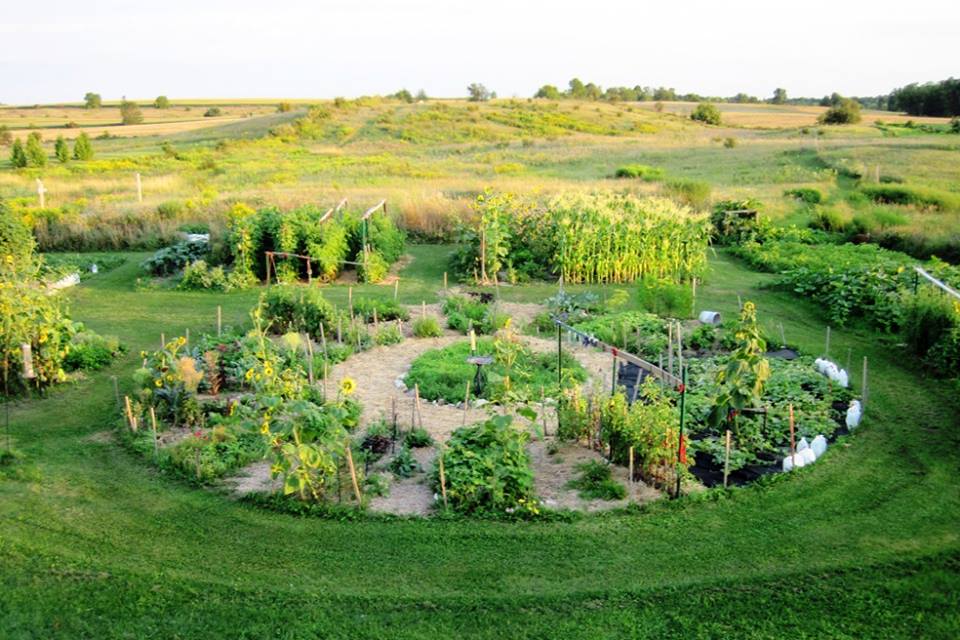
Overview of organic garden using companion planting via Common Sense Home
1. Know your growing season
Honestly, Growing Zones can be confusing. However, knowing how many frost-free days you have in your area and planning accordingly is easy. Dave’s Garden has an amazing tool to help you figure out how many frost-free days you have on average in your growing season based on your zip code. Plug in your five-digit zip code and take note of your number as it will go a very long way to helping you plan what you can grow.
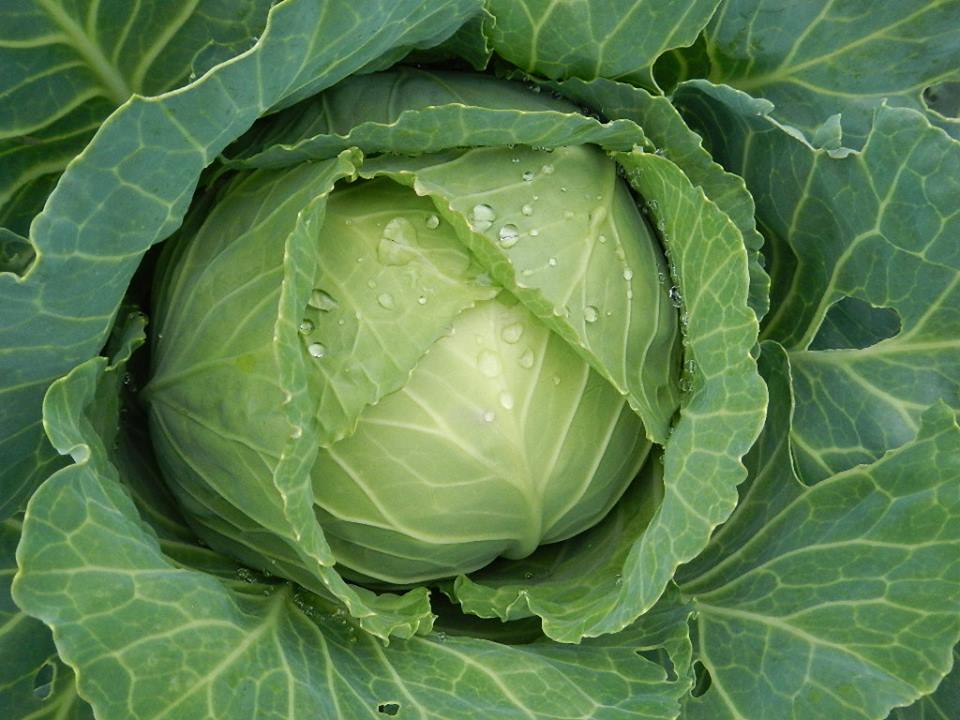
Organic heirloom cabbage via Montana Homesteader
2. Track the sunshine
Whether you live in a home that already has established garden beds, will be creating/building the beds yourself or planting in pots, it is important to keep in mind how the sun hits your property throughout the day. The number of hours of direct sunlight your growing space gets will determine what you can actually grow.
For example:
- With 6+ hours of direct sun each day, you can grow things like corn, tomatoes, peppers, beans and peas, summer and winter squash, melons, potatoes, cucumbers and a wide variety of culinary herbs.
- With 4 to 6 hours of direct sun each day, you can grow things like broccoli, cabbage, cauliflower, kale, and Brussels sprouts.
- With 2 to 4 hours of direct sun each day, you can grow greens! Spinach, Swiss chard, lettuce, endive, mesclun, arugula, bok choi, mustard greens and parsley.
- If you have less than 2 hours of direct sun per day, you’re in for a challenge, but it’s still worth a shot! Try loose leaf lettuce or radishes.
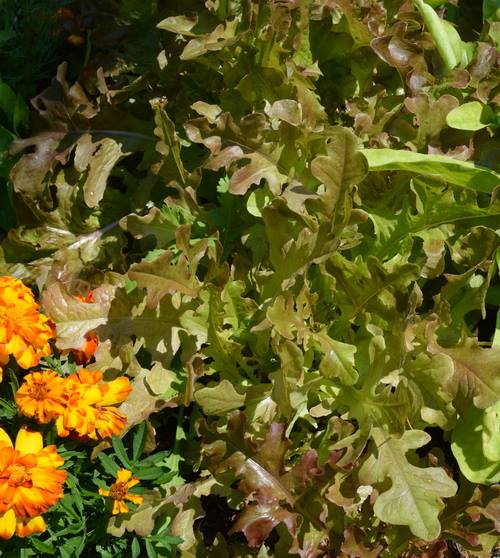
Red salad bowl lettuce with marigolds via Joybilee Farm
3. Get to know, then build your soil
Edibles must have a nutrient-dense home to grow in in order to become nutrient-dense themselves. Soil that is lacking nutrients has nothing to give the plants that are growing in it, so it won’t. Most local nurseries sell inexpensive soil testing kits that will give you a good idea of what is in your soil. Once you know what’s in your soil, you can amend it using compost, manure or a variety of organic products found in your local nursery.
When planning an organic garden, you have to take this process one step further by doing your best to find out how the soil has been treated previously. If you can easily track who has planted what and whether or not it has been organic, excellent. If you cannot track it, your best bet is to proceed with raised beds so you can build up on top of the existing soil with organic soil and compost.
Lasagna gardening and hugelkultur beds are two other fantastic ways to build your soil while knowing exactly what is going into it. These methods take a little more effort than simply pushing seeds into the existing soil, but will ensure that the vegetables you plant are growing in healthy, organic soil.

Hugelkultur bed in Spring via Joybilee Farm
4. Water
Think about your water sources and how you will water your growing plants. Depending on whether you have raised beds, ground level beds or are planning to grow in pots, all seeds must have water and all established plants require even more water.
Your options for getting water to your growing space might include hand watering, using a hose, drip irrigation or letting nature take care of it (if you are lucky enough to live in an area that isn’t faced with drought), but it must be thought about and planned for. Depending on the size of your growing space, watering by hand can take a lot of time and must be factored in to your daily routine.
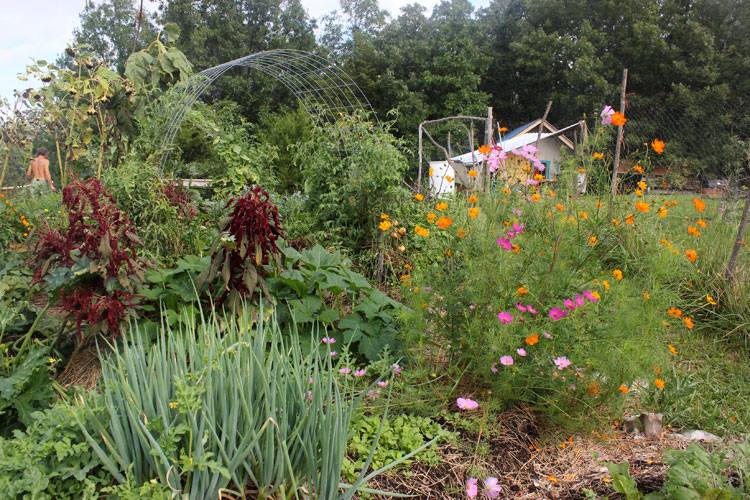
Organic garden using companion planting via Homestead Honey
5. Seeds
Once you know how much sun your plants will get, how long your growing season is and where you’ll be planting your glorious veggies, it’s time to think about purchasing some seeds or starts.
If you have space and know-how to build your own set of grow lights, you might not ever have to purchase starts from your local nursery or farmers market. However, if you are limited on space, time or confidence in your building abilities (practice makes perfect!), ensure that you are purchasing organic vegetables that were started from organic seed and not treated with any chemicals before they get to you. Your pollinator friends will thank you first, your body will thank you later.
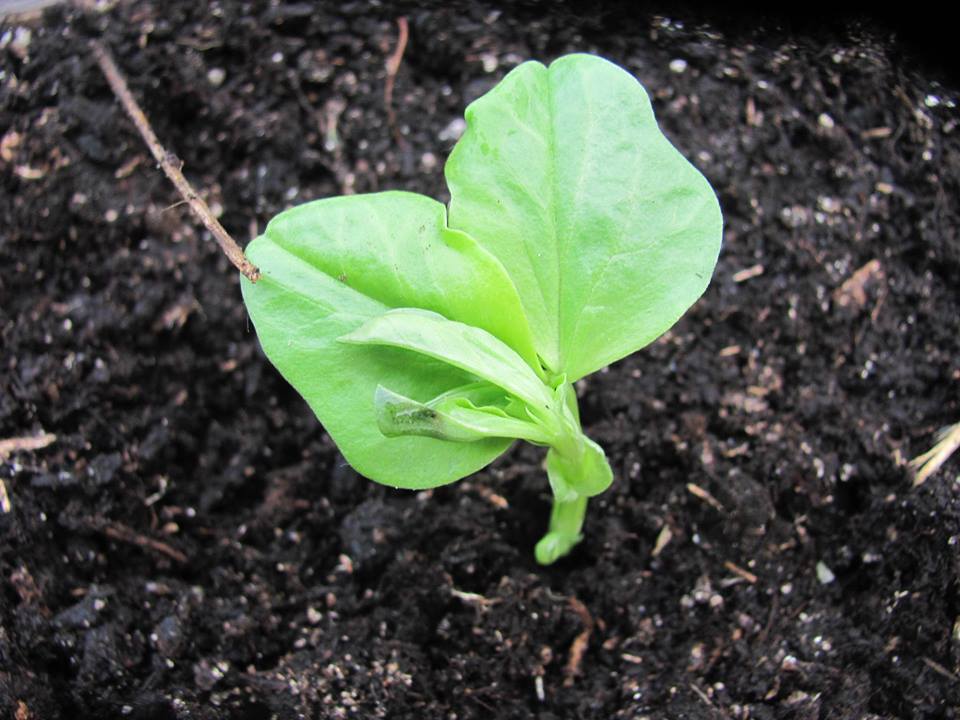
Vegetable start via Family Food Garden
A few last tips on how to start an organic garden
Start small and work your way up.
If you’re passionate about growing your own organic fruit and vegetables, you probably want to start with as many varieties as possible, right? While this is not without its merits, you will do yourself a huge favor by picking just a few things to start and learn with now. Then, next year (and every year after that), you can expand. It’s always better to have a few successful varieties than a ton of failing varieties. Trust me.
Try companion planting on a small scale.
Companion planting and organic gardening easily go hand in hand. Planting a tomato in a big pot? Strategically place 10 carrot seeds or three basil seeds around the base of the tomato and watch them grow together. Planting some cucumbers to climb up a fence? Plant some bush beans in front of them to shade their toes and add nitrogen to the soil.
Companion planting, when done intentionally, can help your fruits and vegetable grow healthier and more nutrient dense as well as help protect each other from pests.
Be prepared for “failure.”
Every single seed will not germinate and despite your best efforts, not every start will survive. Pests will find your beautiful plants and rip them to shreds. Hail or whipping winds will damage your fruits and veggies right before harvest time. As hard as it is, it’s really just part of the process. Some years are better than others, some years you just can’t seem to do anything right in the garden. Like life, take every lesson and each heartbreak and pour the knowledge gained from them into next year’s plans and each year in the garden will get a little bit better.
Take pride in the small victories.
Harvesting 10 carrots from a small pot for the first time can feel like winning a gold medal. Eating a still-warm-from-the-sun tomato is one of the most satisfying experiences ever. Allow yourself to feel the pride of your harvest and then enjoy that carrot or that tomato like it’s the best thing on the planet because it is and because you deserve to!
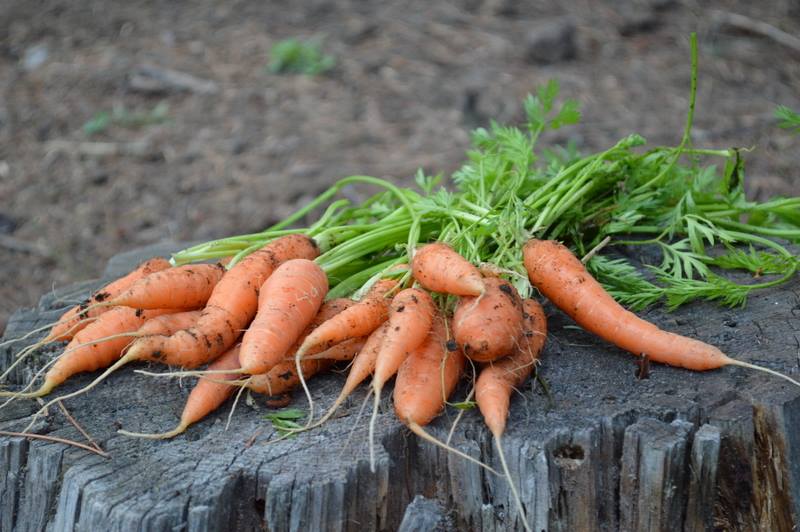
Carrot harvest via Joybilee Farm
Organic gardening is full of rewards, both for your own health and for the health of the planet. By following a few easy steps on how to start your own organic garden, you can be well on your way to harvesting your first meal straight out of your very own garden!
Grow Healthy Heirloom Tomatoes Every Year
Learn how to nurture your seedlings, properly feed your plants, keep pests away & more in the online class Growing Heirloom Tomatoes. Enroll Now »

Share tips, start a discussion or ask one of our experts or other students a question.
No Responses to “How to Start an Organic Garden in 5 Simple Steps”